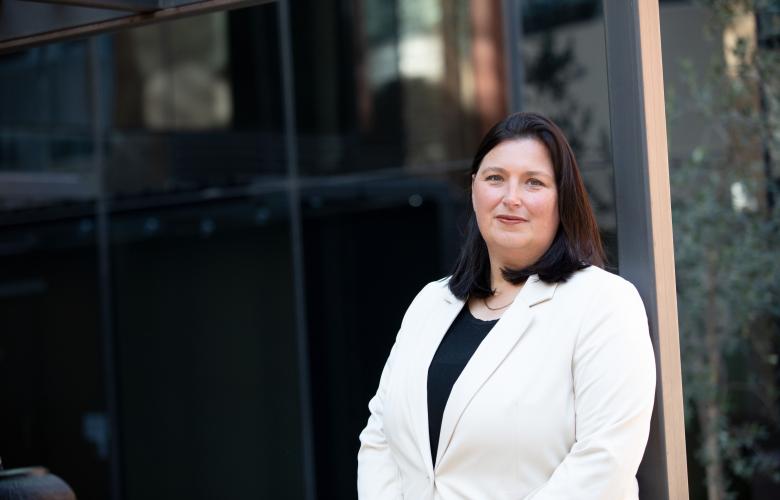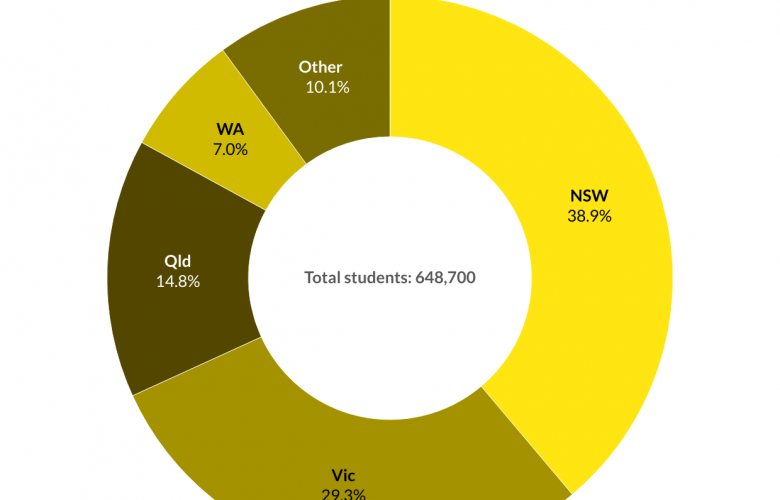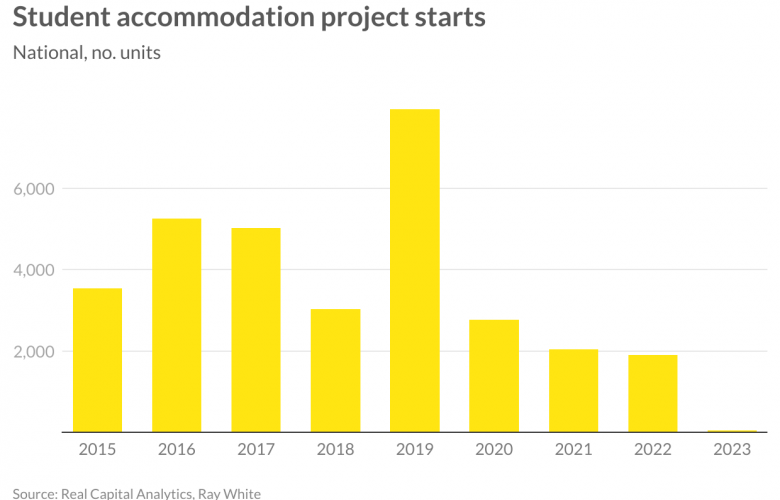International students adding to housing supply issues - RWC
Contact
International students adding to housing supply issues - RWC
According to Vanessa Rader, Head of research, Ray White Commercial, across the investment front, student accommodation and its relationship with residential demand and strong increases in income has not gone unnoticed.
There have been 648,700 international student enrolments across Australia this year, a 27 pr cent increase on the same time last year. After China banned foreign university online courses earlier this year, we saw a remarkable increase in the number of international visas and subsequent enrolments in Australian courses. The Chinese foreign student population is the largest in the country, representing 22 per cent of all international students, followed by India (16 per cent) and Nepal (9 per cent). Despite this large jump in student numbers, activity continues to still be behind 2019 results, however, there has been a movement towards NSW over Victoria with recovery occurring quicker in the more northern state. NSW is now home to the bulk of the student population, while markets such as Queensland, WA and SA have also increased their representation.
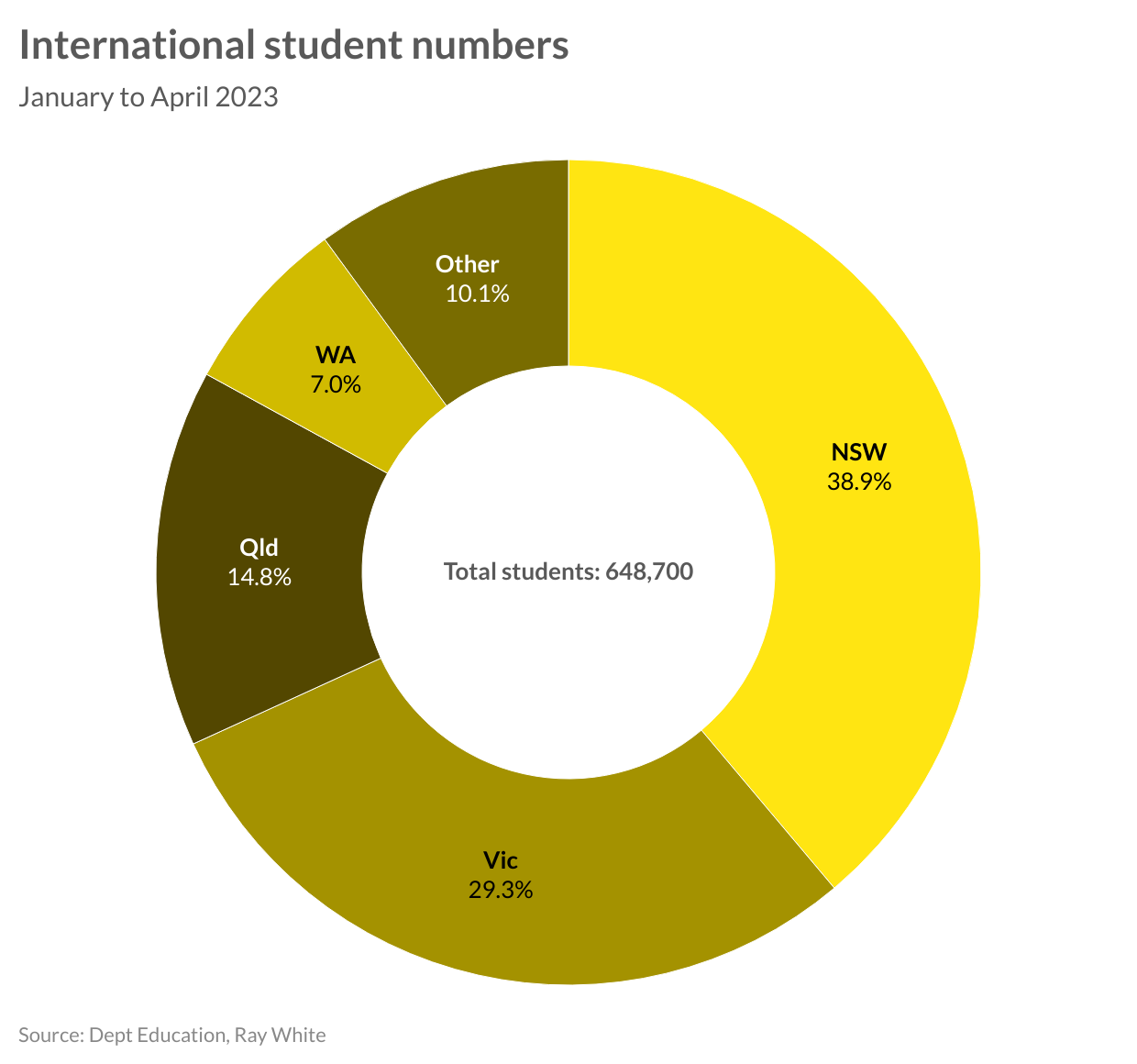
While student numbers were higher prior to COVID-19, so too was our development of purpose built student housing. The rise of offshore investors into this space saw a strong uptick in development both on-campus and private facilities. Many groups came to Australia to capitalise on this need, however, have been quiet over the last few years. Construction starts were at their highest in 2019 where 8,000 units commenced across 22 projects, the bulk located in Sydney, Melbourne, Brisbane and Adelaide, with some of the first purpose built facilities in Perth also coming online. With the tap turning back on for international students, and the shortage of housing across the country, the need to continue to develop student accommodation options has now expanded. With most capital cities recording residential vacancy rates in the sub 1.5 per cent range, and rentals increasing as much as 30 per cent per annum in some markets, the mismatch in demand and supply across the broader residential market has been added to by this rapid influx of students.
Encouragingly, over the last 12 months we have seen more than 3,500 purpose built student accommodation units completed (dominated by Sydney and Melbourne), many of which were fully subscribed to prior to completion, further emphasising the underlying demand. While 2023 has seen limited new starts, there are close to 2,500 units currently under construction likely to be added to supply over the next 18 months. While we have seen some improvement in development activity, the limited movement in this space during the pandemic has seen the need for some “catch up”, not dissimilar to the broader residential market grappling with population increases fuelled by immigration. However, a combination of labour shortages and high material costs continues to strain the building industry, coupled with lengthy planning delays all adding to the untimeliness of supply projects.
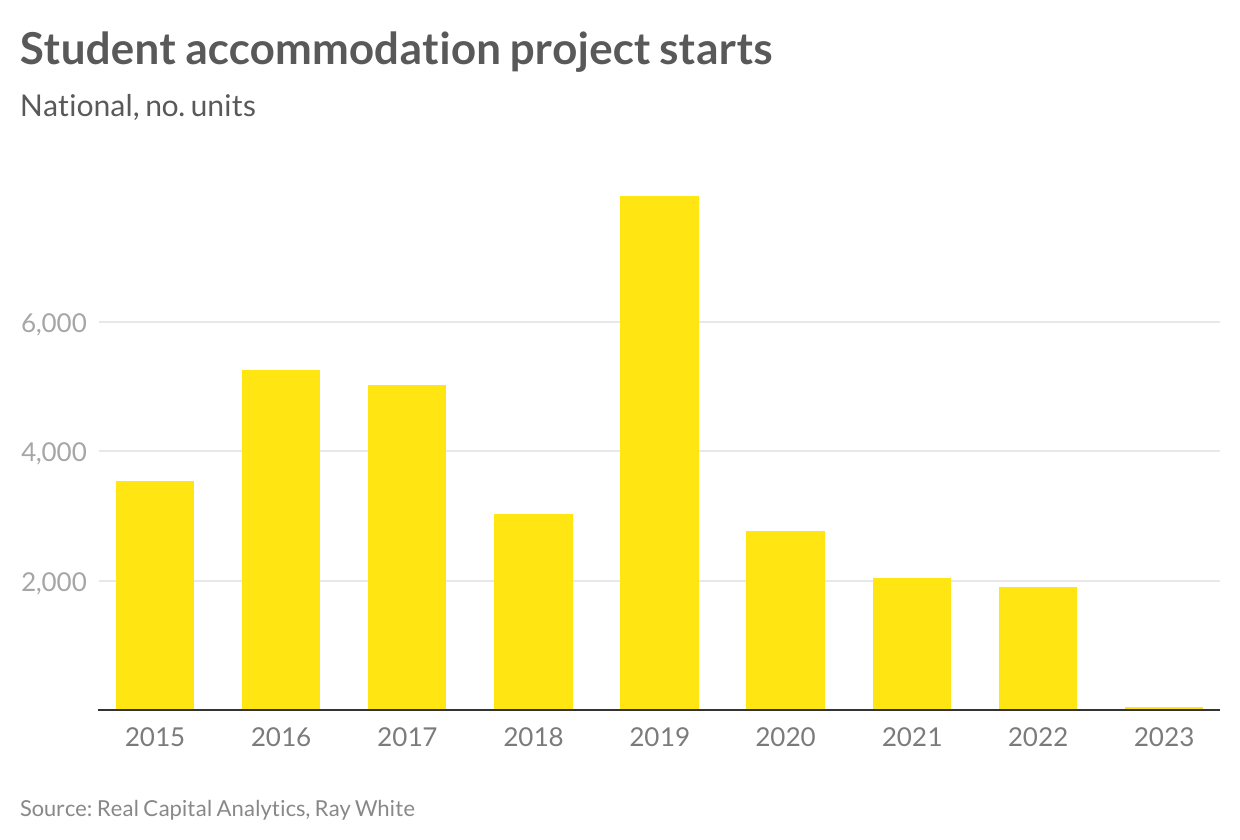
Across the investment front, student accommodation and its relationship with residential demand and strong increases in income has not gone unnoticed. An asset class long favoured by offshore buyers, these groups have historically purchased larger portfolios across the country. However, limited assets to market have seen no major transactions occur more recently. The growth of assets such as boarding houses as an investment option have increased in popularity in line with significant rises in residential rents and the demand for smaller and more affordable housing options from a range of tenants.



